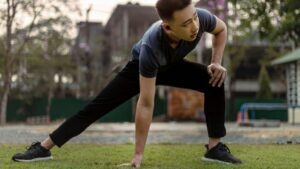
Along with pitching lessons, working out is essential for any young pitcher to perform at their best. Many pitchers focus solely on arm exercises to prevent injury and improve performance, without realizing the huge benefits that come from strengthening the lower body.
From faster pitching speeds to better hip stability when throwing, there are many advantages associated with training your lower body for youth pitching that can help a pitcher reach their performance goals while staying healthy.
The energy pitchers create when they step and throw is about four times their body weight. On the mound, it’s six times their body weight. Going down the mound helps acceleration, but it’s tough on deceleration. Athletes can only accelerate what they can decelerate, and are only as strong as their weakest link.
For any rotational athlete, if the decelerators (the brakes) don’t equal the accelerators, they have a functional strength imbalance. If pitchers only work on their pecs, biceps, and quads, they cannot throw any harder, as their lats, supraspinatus, and all the muscles on the backside of their arm can slow them down.
Keep reading to learn more about why it is so important to incorporate lower body strength training into your workout routine, or book pitching lessons for your athlete today by finding a coach near you or by signing up for one of our memberships.
A Strong Core and Lower Body Maximizes a Pitcher’s Power
Youth pitching requires a complex interplay of lower extremity muscles to provide a solid foundation for the torso to rotate and flex. The quadriceps, hamstrings, and hip rotators work together to create a stable base, allowing young pitchers to generate the necessary power and control for their pitches.
The core and lower extremities are responsible for generating a lot of the power that allows pitchers to make a strong, accurate throw. A strong core will help stabilize the spine, allowing the transfer of power from the lower body to the upper body.
On the back of the legs, the hamstrings and glutes are responsible for hip extension, which is the main source of athletic power. They are also key to strong lateral movements, such as pushing off the mound.
Developing the quad and calf muscles on the front of the legs is critical for balance, stability, and muscle symmetry. It also contributes to overall leg drive, which impacts pitching velocity and should translate to faster pitching.
Functional Strength is a Key Area of Pitcher Development – a Tom House Philosophy
Even the smallest muscles can make a big impact on athletic performance. The coaches at National Pitching Association have a holistic approach to muscle development, focusing on not only building strength but also maintaining flexibility and balance. By emphasizing the importance of a properly developed and maintained muscle system, we aim to help pitchers not only improve their performance on the mound but also stay healthy and prevent long-term damage.
Functional strength development is one of our main goals. We recognize the importance of developing well-rounded athletes who not only have the necessary skills but also possess the physical capabilities to execute them.
Comprehensive Pitching Lessons that Put the Player’s Health First
Our comprehensive approach to pitching lessons ensures that our players are healthy, well-prepared, and equipped with the tools they need to succeed on the field. We go beyond just technique to prioritize the health and wellbeing of each player.
Our team of experienced trainers works closely with pitchers to ensure they are not just honing their skills but also taking the necessary precautions to prevent injury and keep themselves healthy for the long haul.
Book a lesson with one of our knowledgeable, experienced coaches right away or sign up for one of our membership packages today.
